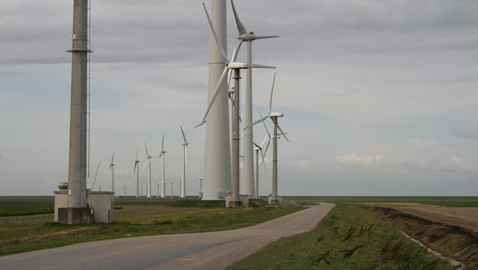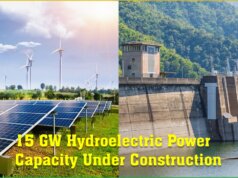
Renewable power generation technologies are now competing head to head with fossil fuel-fired electricity generation options, according to a recently released report by the International Renewable Energy Agency, an intergovernmental organisation with headquarters in the UAE that supports countries in their transition to a sustainable energy future.
The report titled ‘Renewable Power Generation Costs In 2014’ said renewable power generation technologies experienced relentless decline in costs in 2013 and 2014 as a result of which their competitiveness have now reached historic levels.
The cost of electricity from sources such as onshore wind, solar photovoltaic and concentrating solar power have come down significantly due to fall in installation costs and improvement in performance, the report pointed out. It added that biomass for power, geothermal power and hydropower were mature technologies and could provide the lowest cost electricity of any source where unexploited economic resources exist.
Elaborating on the competitiveness of renewable power generation technologies, the report said solar photovoltaic module prices in 2014 were 75 per cent lower than their levels at the end of 2009 while the fall in total installed costs of utility scale PV systems ranged between 29 per cent and 65 per cent during the period 2010 – 14 depending on the region. The levelised cost of electricity of utility scale solar PV projects fell as low as $0.08/kWh in 2014, it added.
“Where good resources exist and low-cost financing is available, utility-scale PV projects are now being built that provide electricity at a lower cost than fossil fuels (e.g. in Dubai, Chile and a range of other countries) without any financial support, even where indigenous fossil fuels are abundant. A similar story is unfolding in the residential solar PV sector, as the LCOE of solar PV has fallen by between 42 percent and 64 percent between the beginning of 2008 and 2014,” the report said.
Onshore wind energy
Focusing on onshore wind, the report said it was one of the most competitive sources of electricity available since technology improvements had led to increased capacity factors and fall in installation costs. It added that the LCOE of wind was now typically in the same cost range, or even lower, than that of fossil fuel power generation. Giving an example, the report said the best wind projects in the US delivered electricity for $0.05/kWh without financial support.
The LCOE of a power generation technology reflects multiple factors such as resource quality, equipment cost and performance including capacity factor, the balance of project costs, fuel costs if any, operation and maintenance costs, the economic lifespan of the project and the cost of capital.
The report by IRENA gave weighted average LCOE for various renewable power generation technologies in different regions. For utility-scale solar PV projects installed in 2013 and 2014, the weighted average LCOE by region ranged from a low of around $0.11 to $0.12/kWh in South and North America respectively to over $0.31/kWh in Central America and the Caribbean. The weighted average LCOE for wind ranged from a low of $0.06/kWh in China and Asia to a high of $0.09/kWh in Africa.
For hydropower, the estimated weighted average LCOE by region varied between $0.04/kWh in Asia and South America to a high of $0.12/kWh in Oceania. The weighted average LCOE of CSP by region varied from a low of $0.20/kWh in Asia to a high of $0.25/kWh in Europe. In case of offshore wind, the regional weighted average LCOE varied from a low of $0.10/kWh for near-shore projects in Asia to $0.17/kWh for projects in Europe.
The report highlighted that China and India offered some of the most competitive renewable power generation project development costs in the world which translate into very competitive LCOEs. In China, however, the financing costs are lower than in India.
The report said hydropower was still the lowest-cost renewable power generation option in India with weighted average hydropower costs between $0.04 and $0.05/kWh for small and large-scale projects. In case of large-scale wind projects, the average costs were around $0.08/kWh, with a range between $0.05 and $0.10/kWh, while small-scale (
The report emphasised that though utility scale renewable power generation options were now competitive in a growing number of markets more needed to be done in order to make decision makers aware about the competitiveness of renewables.











